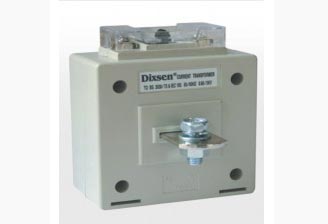
What are the two types of current transformers?
1. Wound Current Transformers
Wound current transformers, a traditional yet enduring design, consist of a primary winding encircling a ferromagnetic core, alongside a secondary winding. When current flows through the primary winding, it induces a magnetic field in the core, consequently generating a proportional current in the secondary winding. This design ensures accurate current measurement and reliable performance across various electrical systems.Pros:
Established Reliability: Wound CTs have a long-standing track record of reliability in diverse industrial and commercial settings.High Accuracy: These transformers offer precise current measurement, making them suitable for critical applications where accuracy is paramount.
2. Toroidal Current Transformers
Toroidal current transformers feature a toroid-shaped core with wire wound around it, eliminating the need for a primary winding. This design offers several advantages, including space efficiency and reduced flux leakage. Toroidal CTs are widely favored for their compact size and excellent performance characteristics.Pros:
Space Efficiency: The compact design of toroidal CTs makes them ideal for installations with limited space, offering flexibility in various applications.Low Flux Leakage: The closed-loop construction of toroidal CTs minimizes flux leakage, resulting in accurate current measurement and reduced electromagnetic interference.
In conclusion, both wound and toroidal current transformers play indispensable roles in electrical systems, each offering unique benefits suited to specific requirements. Whether it's the reliability and precision of wound CTs or the space efficiency and low flux leakage of toroidal CTs, engineers have a range of options to choose from based on the needs of their projects.
Which current transformer is more accurate?
What is the purpose of a current transformer?
What are the three current transformers?
What does a current transformer do?
What is difference between CT and PT?
How many types of CT transformers are there?
What is the CT in a switch yard?
What does CT mean on breaker box?
What happens if CT secondary is open?
What is the difference between CT and normal transformer?

